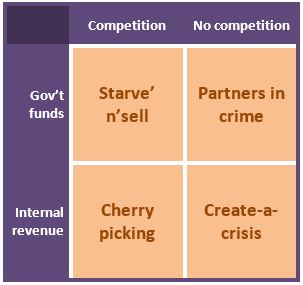The endgame of the current rounds of cuts at Canada Post is some form of privatization. In the previous post, I argued that privatization proceeds differently depending on context. Many factors – I focused on whether a public service provider is exposed to competition and is profitable – can have an impact. The result of replacing public with private provision can be reached through a rapid sell-off, a slow attrition of services, or anything in between. Fortunately, the path to be taken by Canada Post is not yet drawn. Yet while privatization is not an inevitability, the window to effectively prevent it will not stay open for very long. Here are some thoughts on the privatization strategies possible at Canada Post and the anti-privatization strategies to fight them.
Tag: postal service
There is little doubt that Canada Post’s recently-announced plan to eliminate home delivery, raise prices and lay off thousands of workers is not aimed solely at streamlining operations, but is likely a prelude to future privatization of postal delivery in Canada. Canada Post is ripe for the picking: it is a profitable, socially-useful public enterprise with n updated, nation-wide infrastructure of retail outlets, other properties, vehicles and IT systems. One bad year in 2011, when the post office recorded a loss due in part to rotating strikes and a 2-week lockout, has been used to create an image of unsustainability and justify the current cost-savings plan.
Any future privatization attempt can play out in a number of ways. While we typically think of privatization as a sell-off – the government transferring ownership of a public service provider into private hands – the exact nature of the transition between public and private service provision can take on a number of unique forms. Breaking a concept as broad, and at times nebulous, as privatization into more concrete and discrete strategies not only makes it easier to analyze particular episodes, but also aids in developing effective opposition.
I propose one way to differentiate between privatization strategies that is simple and universal. Four possible strategies emerge based on answers to two questions. First, are the majority of operating expenses of the public service to be privatized covered by internal revenue or government funds? Second, is the public service provider exposed to private competition before privatization? Looking at these two questions simultaneously produces the following grid of privatization strategies that can be used to assess what may lie in store for Canada Post and compare this to other privatizations, in particular those of postal services in other countries.
